reese trailer brake controller manual
Welcome to the Reese Trailer Brake Controller Manual. This guide provides comprehensive instructions for installation, understanding features, troubleshooting, and maintenance. Perfect for both new and experienced users.
1.1 What the Manual Covers
This manual provides detailed instructions for installing, configuring, and maintaining the Reese Trailer Brake Controller. It covers essential topics such as initial setup, wiring, and calibration. Additionally, it explains the controller’s features, including manual control, gain adjustment, and LED indicators. Troubleshooting common issues and understanding error codes are also addressed. The manual further includes maintenance tips, such as cleaning and inspecting the controller, and guidance on legal and safety considerations. Whether you’re a novice or experienced user, this guide ensures safe and effective use of your brake controller.
1.2 Key Features of the Reese Trailer Brake Controller
The Reese Trailer Brake Controller boasts an array of advanced features designed for optimal braking performance. It includes a proportional braking system, which applies trailer brakes in sync with the vehicle’s brakes, ensuring smooth deceleration. The manual control function allows for quick, precise activation of the trailer brakes during setup or low-speed maneuvers. Adjustable gain (output control) lets users customize braking sensitivity to suit different trailer weights and driving conditions. LED indicators provide real-time feedback on system status, including power, braking activity, and error codes. The controller also supports both electric and electric over hydraulic braking systems, making it versatile for various trailer setups. Additionally, it features a compact, durable design and is compatible with a wide range of vehicles and trailers, ensuring reliable performance on the road.
1.3 Importance of Proper Installation and Setup
Proper installation and setup of the Reese Trailer Brake Controller are crucial for ensuring safe and effective braking performance. Incorrect wiring or mounting can lead to malfunction, posing serious safety risks. A well-installed system ensures that the trailer brakes engage smoothly and proportionally with the vehicle, preventing jerking or loss of control. It also enhances overall towing stability, reducing wear on both the vehicle and trailer brakes. Additionally, correct setup guarantees compliance with local and federal regulations, avoiding potential legal issues. Always follow the manual’s instructions for mounting, wiring, and calibration to achieve optimal results. Proper setup also extends the lifespan of the controller and connected components, ensuring long-term reliability and performance. Neglecting these steps can result in poor braking efficiency and increased risk of accidents, making adherence to guidelines essential for safe towing experiences.
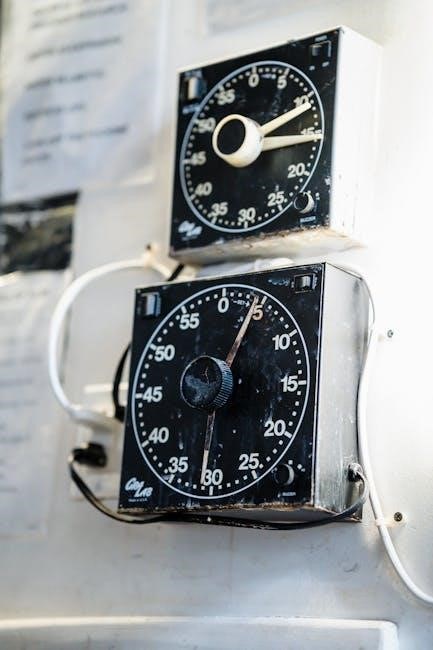
Installation Steps for the Reese Trailer Brake Controller
Mount the controller securely, wire it to your vehicle’s electrical system, and connect it to the trailer. Follow the manual for proper setup and calibration.
2.1 Preparing Your Vehicle and Trailer
Before installation, ensure your vehicle is equipped with a towing package, including a 7-pin trailer connector. Verify the trailer’s braking system is functional and properly loaded. Locate the vehicle-specific brake controller harness, which may require a separate purchase. Plan the installation location for the controller, ensuring easy access and visibility. Disconnect the trailer plug from the tow vehicle to prevent damage during testing. Consult the vehicle manual for the harness location and wiring diagram. Perform a test drive in an open area to adjust the gain and ensure smooth braking. Always follow safety precautions and refer to the manual for specific instructions tailored to your Reese Trailer Brake Controller model.
2.2 Mounting the Brake Controller
Mounting the Reese Trailer Brake Controller requires careful planning to ensure optimal performance and accessibility. Choose a location on the tow vehicle’s dashboard or near the driver’s seat, avoiding areas that may obstruct visibility or interfere with other controls. Clean the mounting surface to ensure a secure fit. Use the provided mounting bracket and screws to attach the controller firmly. Tighten all connections to prevent movement during travel. Ensure the controller is level and facing upward for proper function. Plug in the vehicle-specific harness, making sure it is securely connected to both the controller and the vehicle’s wiring system. Double-check all connections before proceeding to the next steps. Consult the manual for specific mounting recommendations tailored to your vehicle and controller model. Proper installation is essential for reliable brake control and safety on the road.
2.3 Wiring the Controller to Your Vehicle
Wiring the Reese Trailer Brake Controller to your vehicle involves connecting it to the tow package wiring harness. Use a vehicle-specific plug-and-play harness for easy installation. Locate the factory tow package harness, typically found under the dashboard or near the trailer connector. Plug the vehicle-specific connector into the factory harness and attach the other end to the controller’s Quick Connect Plug. Ensure all connections are secure and not loose. Refer to your vehicle’s manual for the exact location of the harness. Avoid splicing wires unless necessary, as this can lead to electrical issues. If splicing is required, use proper connectors and seal them with heat shrink tubing or dielectric grease to protect against moisture. Double-check all connections before testing the brakes. Proper wiring ensures safe and reliable operation of the brake controller.
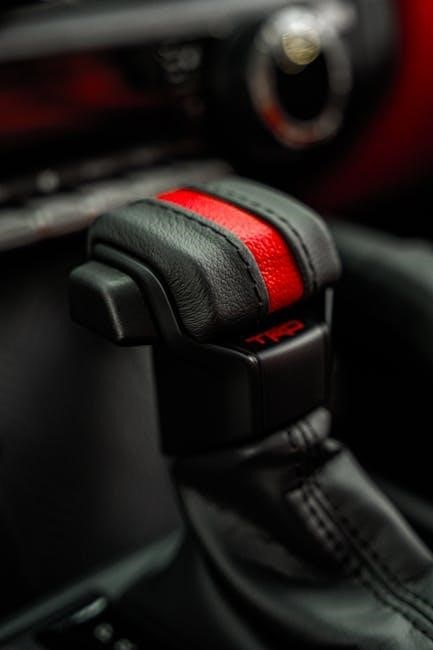
2.4 Connecting the Trailer to the Controller
Once the brake controller is installed and wired, connect the trailer to the controller using the trailer plug. Ensure the trailer’s brake system is compatible with the controller. Plug the trailer connector into the vehicle’s tow package receptacle. Test the connection by applying the brakes manually using the controller’s manual control. Verify that the trailer brakes engage smoothly. If the brakes feel weak or jerky, adjust the output control (gain) accordingly. Always disconnect the trailer plug before testing the breakaway switch to avoid damaging the controller. The LED indicator on the controller will turn green when the trailer is properly connected. If the light flashes red or remains off, check the connection and ensure the trailer is plugged in correctly. Proper connection ensures safe and effective braking performance. Regularly inspect the trailer plug and wiring for damage or corrosion to maintain reliable operation.
2.5 Initial Setup and Calibration
After installation, perform the initial setup and calibration to ensure proper brake performance. Start by connecting the trailer and turning on the controller. Adjust the gain (output control) to match your trailer’s brake sensitivity. Test the brakes in an open area, applying them manually to check responsiveness. If the brakes feel weak, increase the gain; if they jerk, decrease it. Repeat until smooth, firm braking is achieved. Ensure the LED indicators function correctly, with green for connected status and red for active braking. Fine-tune the settings to achieve balanced brake performance. Proper calibration ensures safety and control while towing. Always refer to the manual for specific calibration steps tailored to your setup. This process guarantees optimal braking performance and prevents potential issues during use.

Understanding the Features and Controls
Explore the Reese Trailer Brake Controller’s features, including manual control, gain adjustment, LED indicators, and proportional vs. electric over hydraulic modes, to optimize your braking experience.
3.1 The Manual Control Function
The manual control function on the Reese Trailer Brake Controller allows you to apply the trailer brakes independently of the vehicle’s brakes. Located on the front of the unit, this control is essential for initial setup and situations where gradual speed reduction is needed. Moving the control to the left activates the trailer brakes, with further movement increasing braking force. This feature is particularly useful for testing brake performance during setup or for slowing down in specific driving conditions. Always ensure the trailer is connected properly before using the manual control. The LED indicators will show a red light when the brakes are activated. For optimal braking, adjust the gain (output control) during test drives to achieve smooth, firm stops without jerking or locking up the wheels. Refer to the troubleshooting section for resolving any issues with this function.
3.2 Adjusting the Gain (Output Control)
Adjusting the gain (output control) on your Reese Trailer Brake Controller ensures proper braking power for your trailer. The gain setting determines how much power is sent to the trailer brakes when activated. To set the gain, start by driving your vehicle and trailer in an open area at a moderate speed. Apply the brakes gently and observe the trailer’s response. If the brakes are too weak, increase the gain; if they lock up, decrease the gain. Repeat this process until the brakes engage smoothly without jerking or locking. The LED indicators will flash or stay lit to confirm brake activation. Proper gain adjustment prevents damage to your braking system and ensures safe, controlled stops. Always test brake performance after adjusting the gain to ensure optimal functionality. This step is crucial for maintaining consistent and reliable trailer braking under various driving conditions.
3.3 Understanding the LED Indicators
The LED indicators on your Reese Trailer Brake Controller provide essential feedback about the system’s status. A steady green light indicates the trailer is connected and the system is functioning normally. When the brake pedal or manual control is activated, the LED will turn red, confirming brake engagement. If the trailer is disconnected, the LED may flash red or remain off. These indicators help diagnose issues quickly. For example, a flashing red light could signal a system error or disconnected trailer. Always check the LED indicators before towing to ensure proper connection and functionality. This visual feedback is crucial for safe operation and troubleshooting. By monitoring the LED indicators, you can identify and address potential issues promptly, ensuring reliable braking performance during your journey.
3.4 Proportional vs; Electric Over Hydraulic Modes
The Reese Trailer Brake Controller offers two primary operating modes: Proportional and Electric Over Hydraulic. Proportional mode provides smooth, proportional braking that matches the deceleration of the tow vehicle, ideal for most trailers with electric brakes. This mode ensures even brake application, reducing wear and tear on both the trailer and vehicle brakes. Electric Over Hydraulic mode is designed for trailers equipped with hydraulic brakes, allowing the controller to send an electrical signal to activate the hydraulic system. This mode is particularly useful for larger or heavier trailers requiring more robust braking power. Understanding these modes is crucial for proper setup and ensures safe, efficient braking performance. Always refer to the manual to select the correct mode for your specific trailer configuration.
3.5 Monitoring Brake Performance
Monitoring brake performance is essential for ensuring safe and efficient towing. The Reese Trailer Brake Controller features LED indicators that provide real-time feedback on system status and brake activation. The LED will illuminate when the brakes are applied, either manually or through the vehicle’s braking system. During initial setup, test the brakes in an open area to ensure they engage smoothly and evenly. If the brakes feel weak or overly aggressive, adjust the gain (output control) accordingly. Regularly check the trailer’s brake lights and wiring connections to prevent malfunctions. Additionally, the controller’s diagnostic capabilities help identify issues quickly. Always refer to the manual for specific troubleshooting steps if performance seems inconsistent. Proper monitoring ensures reliable braking and enhances overall towing safety. Regular inspections and adjustments will help maintain optimal performance over time.

Troubleshooting Common Issues
Troubleshooting common issues with the Reese Trailer Brake Controller involves identifying error codes, checking electrical connections, and addressing brake system malfunctions. Regular inspections and adjustments ensure optimal performance and safety.
4.1 Common Problems and Solutions
Common issues with the Reese Trailer Brake Controller include error codes, manual control malfunctions, and electrical connectivity problems. If the LED indicators flash red or remain off, check the trailer connection. For weak or jerky braking, adjust the gain control. If the manual control does not engage brakes, ensure proper installation and wiring. Electrical issues, such as short circuits, can cause system failures. Always disconnect the trailer plug before testing components. Brake lockups may require adjusting sensitivity settings. Refer to the error code chart for specific diagnostic guidance. Regular inspections of wiring and connections can prevent many problems. If issues persist, consult a professional or contact customer support for assistance. Proper troubleshooting ensures reliable performance and safety while towing.
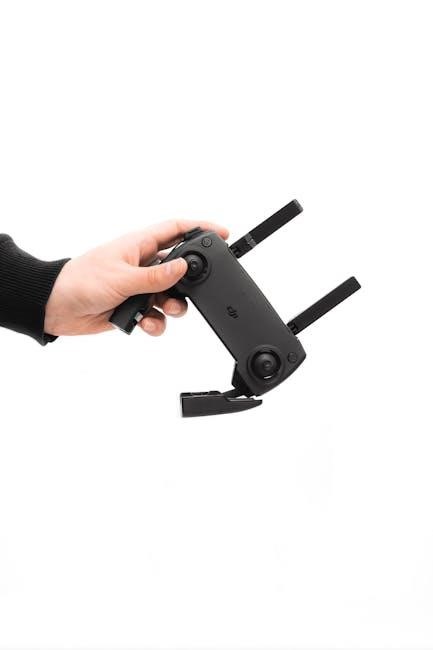
4.2 Understanding Error Codes and Indicators
The Reese Trailer Brake Controller uses error codes and LED indicators to communicate system status and issues. The LED indicator on the front of the unit displays different colors and patterns to signal conditions: green for normal operation, red when brakes are applied, and flashing red or off when the trailer is disconnected. Error codes like E1, E2, and E3 may appear, indicating specific problems such as short circuits, wiring issues, or communication faults. Refer to the error code chart in the manual for detailed explanations. Common issues include trailer disconnects, faulty wiring, or incorrect gain settings. Always check connections and ensure proper setup to resolve errors. If codes persist, consult troubleshooting guides or contact support for assistance. Understanding these indicators is crucial for maintaining safe and reliable braking performance during towing.
4.3 Diagnosing Electrical System Issues
Diagnosing electrical system issues with the Reese Trailer Brake Controller involves checking connections, wiring, and components for faults. Start by ensuring all plugs and connectors are clean and securely attached. Common issues include short circuits, open wires, or corroded connections. Use a multimeter to test voltage and continuity in the wiring harness. If the controller’s LED indicates power but no communication, check the trailer plug for proper connection and ensure the brake control is synced with the vehicle’s system. Blown fuses or tripped circuit breakers in the vehicle’s electrical system can also cause malfunctions. Review the error codes displayed on the controller to pinpoint specific problems. For persistent issues, inspect the wiring harness for damage or chafing, and verify proper ground connections. If problems persist, refer to the troubleshooting section or consult a professional technician for assistance. Accurate diagnosis ensures reliable braking performance.
4.4 Addressing Brake System Malfunctions
Identifying and resolving brake system malfunctions is critical for safety. Start by checking if the trailer brakes are receiving power and if the controller is properly synced with the vehicle’s braking system. Test the brakes manually to ensure they engage evenly. If the brakes lock up or apply unevenly, adjust the gain or output settings on the controller. Inspect the brake pads and drums for wear or contamination, as foreign substances can cause inconsistent braking. Verify that all wiring connections are secure and free from corrosion. If issues persist, check for air leaks in hydraulic systems or faulty brake magnets in electric setups. Always refer to the error codes on the controller for specific guidance. If problems remain unresolved, consult a professional mechanic to ensure proper repair and functionality. Regular maintenance is essential to prevent malfunctions and ensure reliable braking performance.
4.5 When to Seek Professional Assistance
If you encounter issues beyond your troubleshooting capabilities, it’s crucial to seek professional assistance. This is especially true for complex electrical problems or when error codes persist despite your efforts. A certified technician can diagnose issues like faulty wiring, defective sensors, or malfunctioning brake magnets. Additionally, if you’re unsure about adjusting boost settings or syncing the controller with your vehicle, professional help ensures proper configuration. Don’t hesitate to consult experts if you notice inconsistent braking, unusual noises, or if the controller’s LED indicators suggest system failures. Advanced tools and knowledge are often required for intricate repairs. Always prioritize safety and reliability by seeking assistance from a qualified mechanic or brake specialist when needed. This ensures your trailer braking system operates correctly and securely. Regular professional checks can also prevent potential hazards and extend the lifespan of your brake controller.
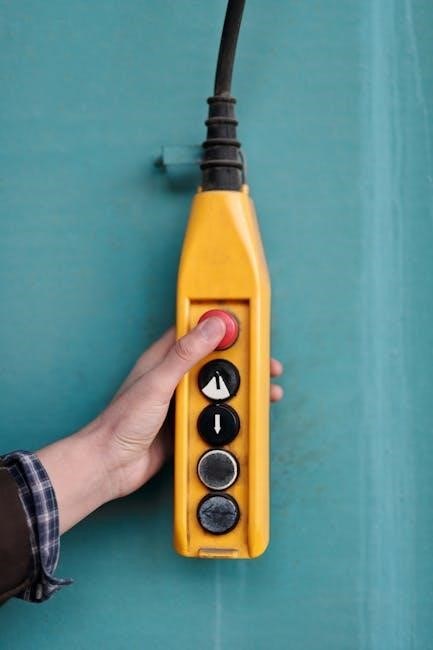
Maintenance and Care for the Brake Controller
Regular cleaning and inspections ensure optimal performance. Update software periodically and store the controller properly when not in use. Replace worn parts to maintain reliability and safety.
5.1 Cleaning and Inspecting the Controller
Regularly clean the controller to prevent debris buildup. Use a soft cloth and mild detergent, avoiding harsh chemicals. Inspect wiring and connections for damage or corrosion; Ensure all components are secure and functioning properly. Check for dust accumulation on the circuit board and gently remove it with compressed air. Inspect the manual control for smooth operation and verify LED indicators are functioning correctly. Look for signs of wear on the mounting hardware and replace any damaged parts. Cleaning and inspecting regularly helps maintain performance and prevents potential issues. Always disconnect the power source before cleaning to avoid damage or electrical hazards.
5.2 Updating Software or Firmware
Regular software or firmware updates ensure optimal performance and compatibility. Check the manufacturer’s website for the latest versions specific to your Reese Trailer Brake Controller model. Download the update file to your computer and follow the provided instructions. Connect the controller to your computer using the appropriate USB or serial cable. Once connected, run the update tool and follow the on-screen prompts to install the new firmware. Ensure the trailer is disconnected and the vehicle’s ignition is off during the update process to prevent any interruptions. Allow the update to complete without disconnecting the power source, as this could corrupt the system. After installation, test the controller to ensure proper functionality. Updates may improve features, resolve bugs, or enhance compatibility with your vehicle or trailer setup. Always verify the update is compatible with your specific controller model before proceeding.
5.3 Storing the Controller When Not in Use
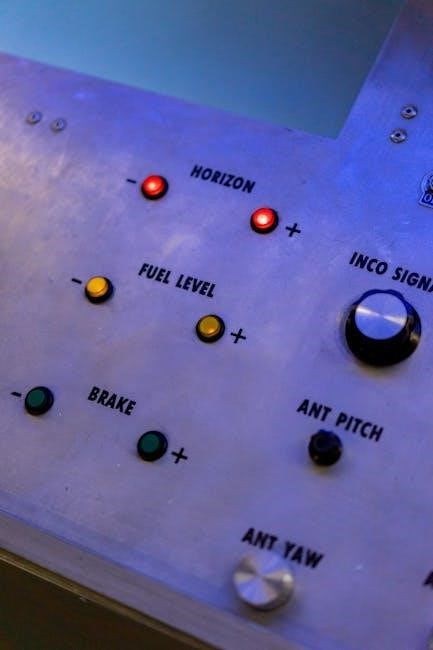
When storing the Reese Trailer Brake Controller, ensure it is protected from dust, moisture, and extreme temperatures. Use a protective cover or plastic bag to prevent contamination. Store the controller in a cool, dry place, away from direct sunlight or heat sources. If the controller is battery-powered, disconnect or remove the battery to prevent drained cells or leakage. Avoid exposing the device to chemicals or corrosive substances. For extended storage, secure the controller to prevent movement or physical damage. Do not store the controller in areas prone to humidity or flooding. Always follow the manufacturer’s recommendations for storage conditions. Proper storage ensures the controller remains functional and ready for use when needed. Consult the manual for specific storage guidelines tailored to your model.
5.4 Regular Inspections for Wear and Tear
Regular inspections are essential to ensure the Reese Trailer Brake Controller functions properly and safely. Start by examining the wiring and connections for signs of wear, corrosion, or damage. Check the manual control for smooth operation and ensure all buttons or levers function as intended. Inspect the LED indicators to confirm they illuminate correctly during operation. Look for dust or debris on the controller’s surface, which can be cleaned with a soft cloth. Verify that all mounting hardware is secure and not loose. If you notice any cracks, frays, or corrosion, address these issues promptly. For detailed inspection steps, refer to the manual’s maintenance section. Regular checks help prevent malfunctions and ensure reliable braking performance. Always clean and store the controller properly when not in use to maintain its condition.
5.5 Replacing Parts and Accessories
Replacing parts and accessories on your Reese Trailer Brake Controller is crucial for maintaining optimal performance. Always refer to the manual for specific instructions tailored to your model. Common replacements include the wiring harness, manual control, or LED indicators. When replacing any part, ensure it is compatible with your controller to avoid malfunctions. Start by disconnecting the power source to prevent electrical issues. Use the appropriate tools to remove the faulty component and install the new one securely. After replacement, reconnect the power and test the controller to ensure proper function. Keep a maintenance log to track replacements and plan future inspections. If unsure about any step, consult a professional to avoid potential damage. Regular replacement of worn-out parts ensures reliable braking and extends the lifespan of your controller. Always purchase genuine or recommended replacement parts for the best results.

Legal and Safety Considerations
Ensure compliance with local and federal regulations regarding trailer brake systems. Always follow safety guidelines to prevent accidents and ensure proper controller function. Your safety is paramount.
6.1 Compliance with Local and Federal Regulations
Compliance with local and federal regulations is essential when using the Reese Trailer Brake Controller. Ensure your setup meets all legal requirements for trailer braking systems in your area. Familiarize yourself with weight limits, wiring standards, and braking performance criteria. Always follow federal guidelines for trailer brake controllers to avoid legal penalties. Check with your local Department of Motor Vehicles (DMV) for specific rules regarding trailer brake systems. Proper installation and maintenance are crucial to meet these standards. Failure to comply may result in fines or safety hazards. Additionally, ensure your vehicle and trailer combination adheres to Gross Vehicle Weight Rating (GVWR) specifications. Regular inspections can help maintain compliance and ensure safe operation. Always refer to your local and federal regulations for detailed requirements.
6.2 Safety Precautions During Installation and Use

Always follow safety precautions when installing and using the Reese Trailer Brake Controller. Disconnect the trailer plug from the tow vehicle before testing or adjusting the system to prevent electrical damage. Wear safety glasses and gloves when working with electrical components. Ensure the area is clear of obstacles and well-lit to avoid accidents. Never test the brakes in traffic; use an open, controlled environment. If unsure about any step, consult a professional to ensure proper installation and function. Failure to follow safety guidelines may result in system failure or personal injury. Regularly inspect the wiring and connections for damage or corrosion. Keep the manual handy for reference during setup and operation. Always test the brakes thoroughly after installation or adjustments to ensure proper function. Adhering to these precautions ensures safe and reliable performance of the brake controller.
